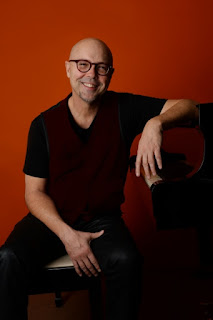Coming to the Palladium: MONK'estra bridges the mid-20th-century innovations of Thelonious Monk to the present
 |
| John Beasley saw lots of creative room for himself in Monk's music. |
Groups larger than the quartets that Monk usually worked with have tackled the repertoire before, shedding new light on it: Hall Overton and Oliver Nelson applied their arranging skills to Monk's music with mixed success for bands of at least 10 players.
Last year was Monk's widely celebrated centennial, and a carryover into the new year will be the visit of the 15-piece band sailing along on the strength of Volume 2 of its self-titled series, "Monk'estra." The ensemble will come to the Palladium Saturday night.
A few years ago, pianist-composer-arranger John Beasley tried out composing software new to him with a Monk tune, "Epistrophy." He went on from there to find Monk's music a fertile field for his imagination to play in. There have now been two Monk'estra recordings, the second of which was released last fall.
In a promotional video interview for Vol. 2 (Mack Avenue Records), Beasley has cited Monk's sense of humor as a particular spur for his own creativity. "It totally made me smile," he recalled about his deep plunge into Monk's works. Moreover, his technical and stylistic variety, which Beasley compares to the art of Pablo Picasso, provides "an open door for musicians to stretch out."
Beasley himself stretches out from time to time, making quite a romantic statement on melodica (a kind of end-blown small keyboard instrument) for "Ask Me Now."
When he sticks to his main instrument, piano, he manages to find new aspects of Monk with a style that doesn't ape the master's. His unaccompanied introduction to "Evidence" is a case in point. It's sweeping and reflective, making an effective contrast with Beasley's use of the band, once it enters. The breaking-up of the theme is quite drastic, and the recording shows off the ensemble's pinpoint coordination, so that the rests are really well-integrated.
That well-honed command of Beasley's arrangements also comes through in "Skippy," after a long synthesizer solo. The different tempos are acutely well-managed. This kind of performance moves the ensemble well to "the outside," and comes across as an exhibition of the avant-garde implications of Monk's music.
But the master's humorous, relaxed quality is not overlooked: One might well leave the Palladium Saturday night humming the tune of "Little Rootie Tootie," should that show up on the set list. In any case, it's likely that fresh perspectives on Monkiana will be well in evidence at this much-anticipated concert.



Comments
Post a Comment